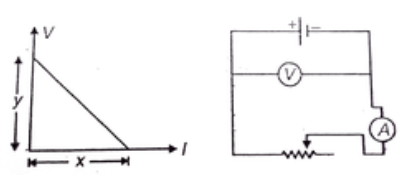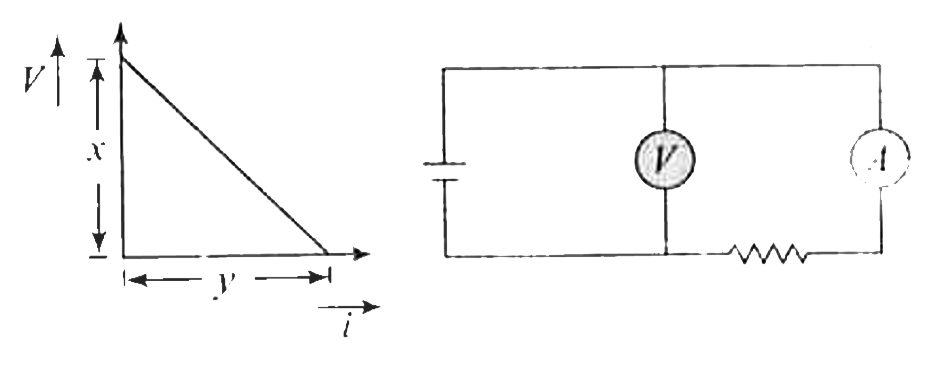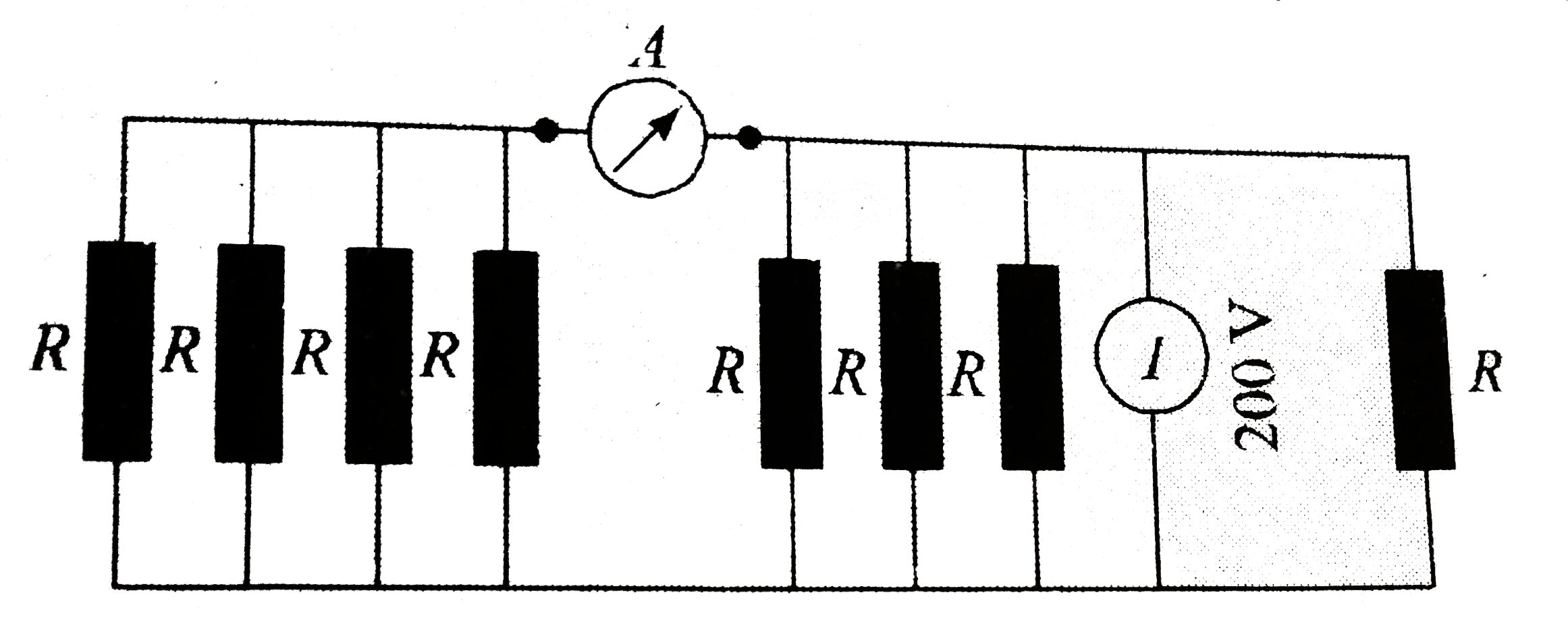shows a circuit used in an experiment to determine the emf and internal resistance of the battery C. A graph was plotted of the potential difference V between the terminals of the battery against the current I, which was varied by adjusting the rheostat. The graph is shown in x and y are the intercepts of the graph with the axes as shown. What is the internal resistance of the battery? 
x
y
x/y
y/x
The correct Answer is:D
d. As V=ε−Ir
From graph it is clear that slope =−r=−y/x
or r=y/x.
Similar Questions
shows a circuit used in an experiment to detrmine the emf and interanl resistance of the battery C. A graph was plotted of the potential difference V between the terminals of the battery against the current I, which was varied by adjusting the rheostat. The graph is shown in x and y are the intercepts of the graph with the axes as shown. What is the internal resistance of the battery?

View SolutionFor the determination of emf E and internal resistance 'r' of a cell , the graph is obtained between potential difference V between the terminal of the cell against the current l, which was changed by adjusting the rheostat, is as shown . The internal resistance of the cell is

View Solution
Knowledge Check
shows a circuit used in an experiment to determine the emf and internal resistance of the battery C. A graph was plotted of the potential difference V between the terminals of the battery against the current I, which was varied by adjusting the rheostat. The graph is shown in x and y are the intercepts of the graph with the axes as shown. What is the internal resistance of the battery?
 AxByCx/yDy/x
AxByCx/yDy/xIn an experiment, a graph was plotted of the potential difference V between the terminals of a cell against the circuit current "I" by varying load rheostat, internal conductance of the cell is given by
 AxyBy/xCx/yD(x-y)
AxyBy/xCx/yD(x-y)In an experiment, a graph was plotted of the potential difference V between the terminals of a cell against the circuit current i by varying load rheostat. Internal conductance of the cell is given by
 AxyByxCxyD(x−y)
AxyByxCxyD(x−y)
In an experiment a graph was plotted of the potential difference V between the terminals of a cell against circuit current I by varying load rheostat. Find the internal conductance fo the cell.

View SolutionIn an experiment, a graph was plotted of the potential difference V between the terminals of a cell against the circuit current "I" by varying load rheostat, internal conductance of the cell is given by

View SolutionA battery has an emf of 12V and an internal resistance of 2Ω. Calculate the potential difference between the terminal of cell if (a) current is drawn from the battery (b) battery is charged by an external source.
View SolutionFor a cell, a graph is plotted between the potential difference V across the terminals of the cell and the current I drawn the cell. The emf and the internal resistance of the cell are E and r, respectively. Then

View SolutionFor a cell, a graph is plotted between the potential difference V across the terminals of the cell and the current I drawn the cell. The emf and the internal resistance of the cell are E and r, respectively. Then

View Solution
